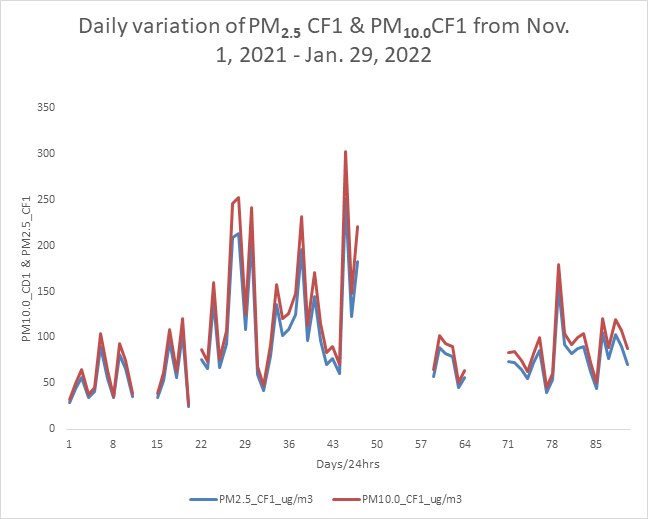Atmospheric Physics; Air Pollution Monitoring and Analysis Using Purple Air Data
Keywords:
Particulate Matters, PurpleAir data, Air Pollution, Pollutant, Concentration.Abstract
Air pollution has become one of the agents that leads to the cause of life-threatening diseases in our contemporary world. Among the major air pollutants is the Particulate Matters PM2.5 and PM10.0. Long-time exposure to fine particles PM2.5 and PM10.0 in the environment has been linked to serious respiratory and cardiovascular diseases. The purpose of this research is to find the concentration of PM in some selected areas in Nigeria (Africa) namely; Lagos, Rivers and Abuja using Purpleair real time data for 12 weeks duration from 1st November 2021 to 31st January 2022. Findings have shown that among the study areas, Port Harcourt has the highest concentration of Particulate Matters followed by Abuja with a 12-weekly average PM2.5_CF1, PM10.0_CF1 and PM2.5_ATM to be 87.80 µg/m3, 101.76 µg/m3 and 63.15 µg/m3 respectively while Abuja has an average PM2.5_CF1, PM10.0_CF1 and PM2.5_ATM values of 70.51 µg/m3, 86.21 µg/m3 and 52.07 µg/m3 respectively. It was also found that the relationship between PM2.5 and PM10.0 showed a positive correlation with R = 0.99 indicating strong linear relationship.

Published
How to Cite
Issue
Section
Copyright (c) 2022 Hammed A. Lawal, Mukhtar I. Mohammed

This work is licensed under a Creative Commons Attribution 4.0 International License.




